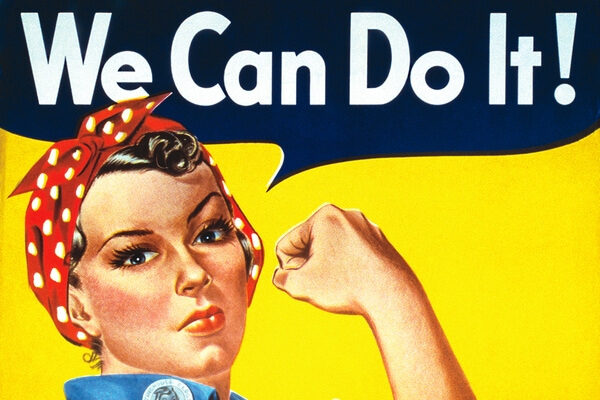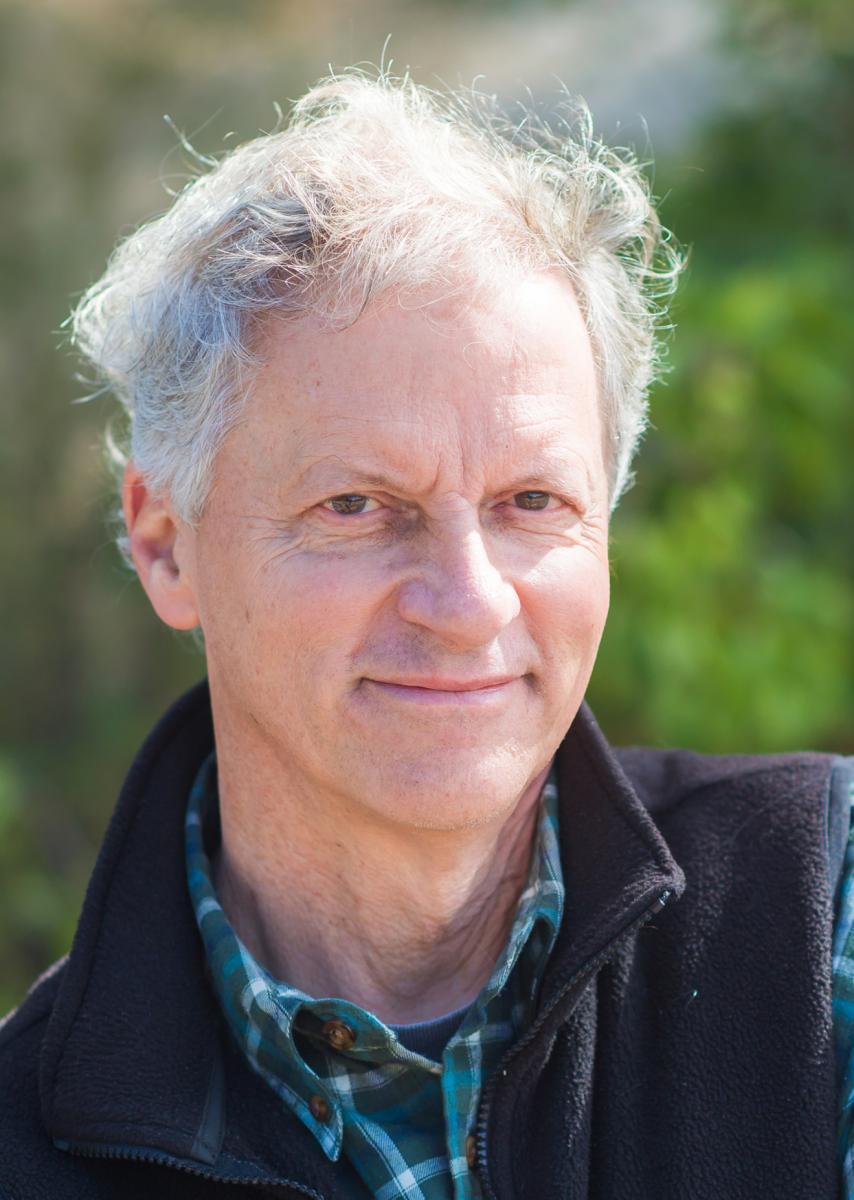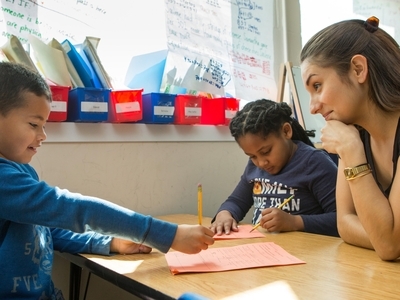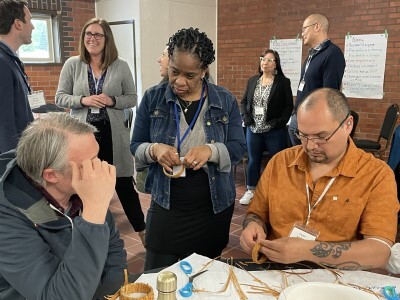Ask Not What the Coronavirus Can Do to You
Topics

Next generation learning is all about everyone in the system—from students through teachers to policymakers—taking charge of their own learning, development, and work. That doesn’t happen by forcing change through mandates and compliance. It happens by creating the environment and the equity of opportunity for everyone in the system to do their best possible work.
Our research into next gen change tells us what motivates people to act. People may take swift action out of fear; but it is purpose, belongingness, service, and a sense of ownership and mastery that makes for lasting change.
Ask Not What the Coronavirus Can Do to You
We all know what follows that headline, don’t we? All together now: “Ask not what the Coronavirus can do to you; ask what you can do to the Coronavirus.”
Why do we know that? Because it has always seemed to us, for the seven decades since John F. Kennedy issued his stirring charge in his inaugural address, as a particularly American sentiment. That’s what we do, as a nation, when we are at our best. We pitch in. We join up. We soldier on.
For the past 18 months, I have worked alongside district leaders and education change experts on an NGLC-led project to rethink how change happens in K-12 education. The “change” we have focused on is transforming learning toward a broader and deeper set of outcomes for our youth. But what we’ve learned and observed about transformational and lasting change applies much more broadly. It applies equally well to schools reconsidering their purpose and operations during building closures; and it applies to all of us as citizens who are focused on beating COVID-19, keeping each other healthy, and securing our collective well-being.
Here’s the point. Mandates have their place (and possibly more so, during emergencies like this). But change happens most deeply, broadly, and effectively when people are inspired to act through collective purpose, fueled by a sense of individual agency and sustained by trust.
We need more of that heart-pounding, all-in call to action expressed so memorably by JFK, and we need it right now. We have spent too many weeks comparing ourselves to China, South Korea, and Hong Kong, wondering “why can’t we seem to shut this virus down the way they have?” That’s the wrong question to ask. We need to learn from their success in combatting the pandemic, certainly. But we are not those places and as a self-proclaimed freedom-loving democracy that prides itself on individual liberty, we need to create our own path.
The basic outline of that path seems clear enough: a super-strict national lockdown of several weeks, as called for by The New York Times editorial board and a chorus of scientists and healthcare experts, coupled with massive expansion of testing and medical/protective equipment manufacturing, followed by a carefully executed phasing in of business, schools, and normal life patterns.
It’d be like a massive, universal adoption of Freeze-Tag, followed by extra-careful screening as we all serially “un-freeze.”
Are we on that path already? Well, sort of: Schools and businesses have closed; many states have issued “shelter in place” mandates; the feds are finally using the Defense Production Act to galvanize manufacturing of needed supplies and equipment; and Congress just passed the largest relief bill in U.S. history to protect workers and businesses during the lockdown and subsequent phase-in.
What’s missing? The call to arms. The inspiring, all-in-this-together encouragement to all of us to pitch in. The “ask not.”
Most Americans don’t appreciate, in good times and bad, being told what to do and where to go (or not go, in this case). It’s just not in our society’s DNA.
But when stirred to do so, we will pitch in. Where’s the Rosie the Riveter for this moment? Where is “My fellow Americans: let’s roll”? Where is the equivalent of Smokey the Bear, or “Buckle Up for Safety,” or “This is your brain on drugs”?
Influencing mass behavior is perhaps the U.S.’s greatest remaining world-leading industry. We do it through Hollywood, popular music, social media platforms and networking, advertising, celebrity endorsement, political and non-profit initiative campaigns, and community organizing. We are really, really good at this.
But in this time of our greatest need, we have not yet marshalled this singular talent. It is past time to do so.
The federal government plays an important, but not controlling role in this effort—exhorting the various influencer industries to mobilize in support of the national lockdown. The work will be done better and more quickly if it is done in an American-style, decentralized, opt-in way. For example:
- The Ad Council could enlist a dream-team of partner ad agencies to crash-create and distribute powerful messages.
- The biggest Hollywood talent agencies could line up dozens of A-list celebrities to support this national effort (as Steph Curry is already doing)
- Facebook and other social media giants could make these messages go instantly viral, in every positive sense of the word.
- The nation’s vast music community can create inspiring anthems for the moment.
- Education publishers could create characters to give children confidence that this crisis can be solved—and perhaps inspire future medical research leaders in the process. (Anyone for a Kid CoVid and Mona Corona dynamic duo of health science super-sleuths?)
- Amazon could tuck stickers or “I’m all in!” window flags in every box they ship.
- Communities could build on nascent, crowd-driven impulses to cheer for courageous healthcare workers (now happening daily at 8:00 p.m. worldwide) and produce or donate urgently needed masks to those on the front lines.
Public schools are grappling with delivering on their mission to educate the nation’s youth, and they are understandably focused on their students’ hunger, mental and physical health, and social connection, followed by learning. But it’s not a great leap to imagine public schools playing a crucial role in this kind of campaign to protect their students’ and communities’ well-being, as they have in other social-purpose campaigns such as reducing smoking or promoting Victory Gardens during World War II. Teachers are among the three most trusted professions (nurses and military officers being #1 and #2) and their messages carry enormous weight.
The point is this: a vast social science research base that has informed our understanding of next gen change tells us what motivates people to act. People may take swift action out of fear; but it is purpose, belongingness, service, and a sense of ownership and mastery that makes for lasting change. So far, all the American public has heard is overpowering messages of danger, restriction, and taking-away, mixed with confusing and conflicting messages from all different levels of government. We need to unite—all of us—around a national crisis-solving plan and crusade in which each one of us plays a crucial part.
Photo at top from poster by J. Howard Miller (1918–2004), artist employed by Westinghouse, used by the War Production Co-ordinating Committee, from scan of copy belonging to the National Museum of American History, Smithsonian Institution, retrieved from Wikimedia Commons, Public Domain.




